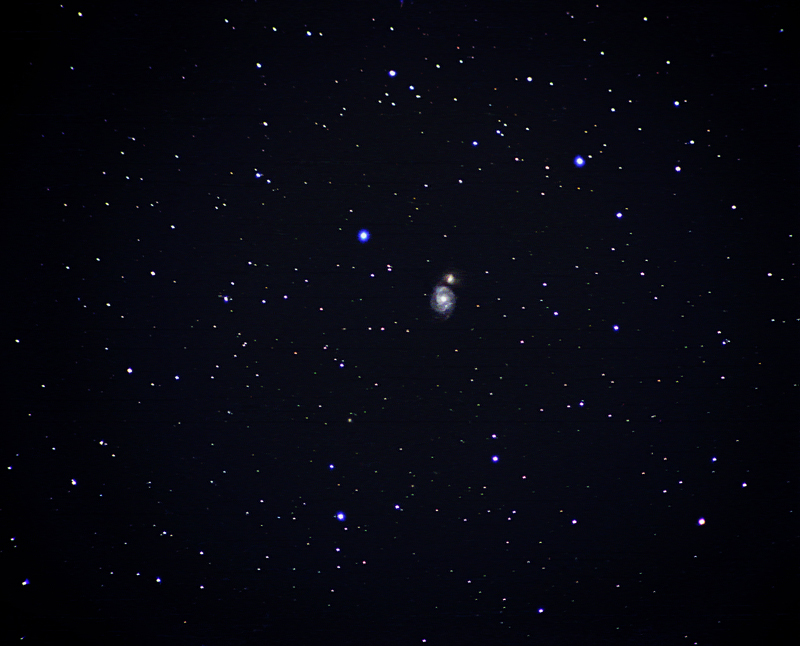
45 minute exposure, Fuji Super HG V 400 film. 5" f/5 refractor at prime focus.
| Object Type | Galaxy Sc |
| Constellation | Canes Venatici |
| Magnitude | 8.1 |
| Size | 11.0' x 7.0' |
A beautiful example of a face on spiral galaxy, M51 is probably the most photographed and observed galaxy in the sky. The spiral arms are probably the easiest of any to observe visually and they are visible in an 8" telescope. Just to the north of M51 (upper right) is the companion galaxy NGC 5195. It appears to be physically connected to M51 and is easily seen with a 6" telescope.

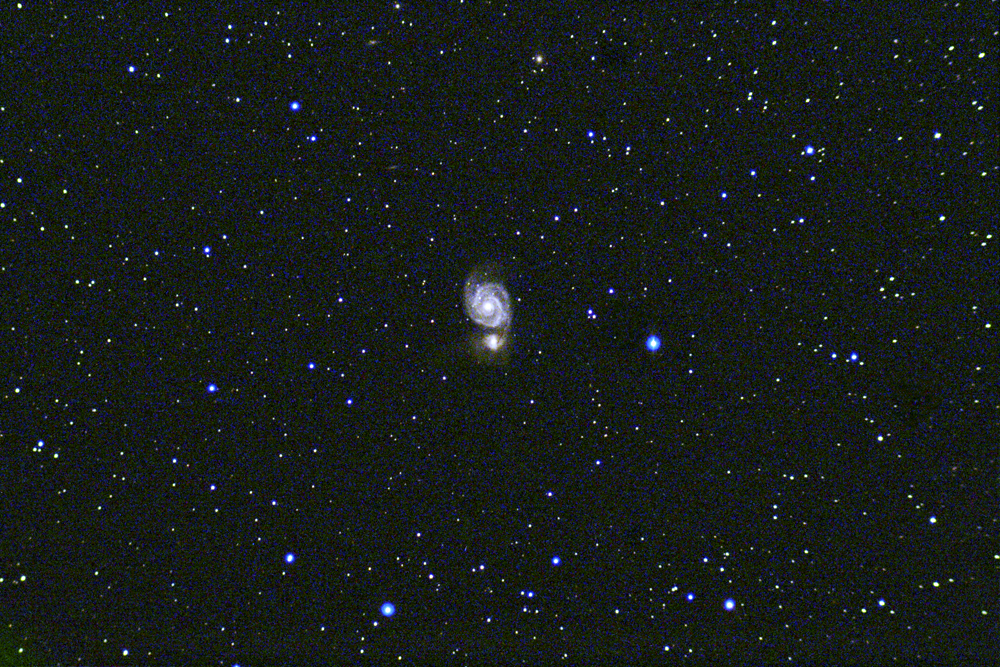
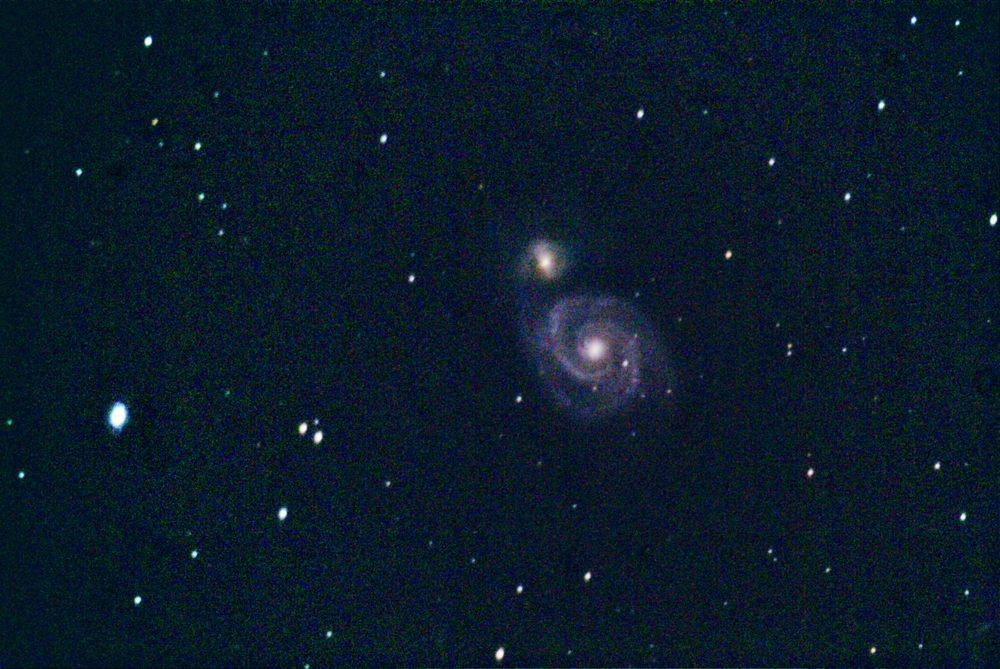
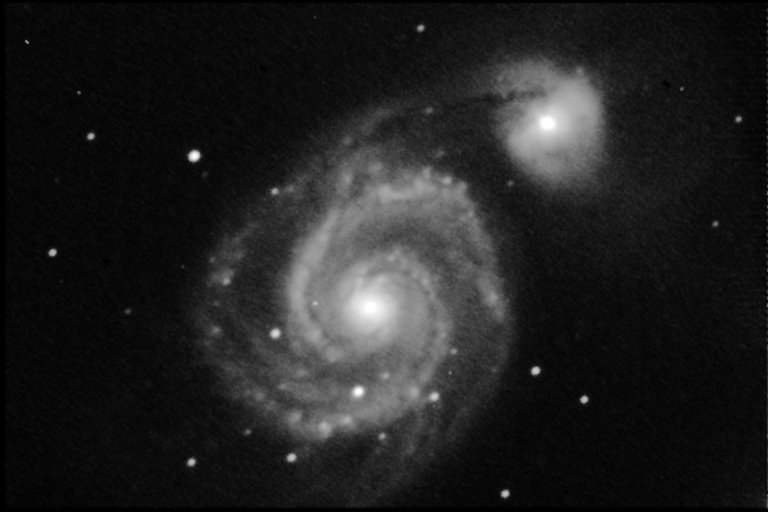 Combination of 3, 3 minute images using a Meade 416xt CCD. 300mm f/6 newtonian telescope at prime focus.
Combination of 3, 3 minute images using a Meade 416xt CCD. 300mm f/6 newtonian telescope at prime focus. 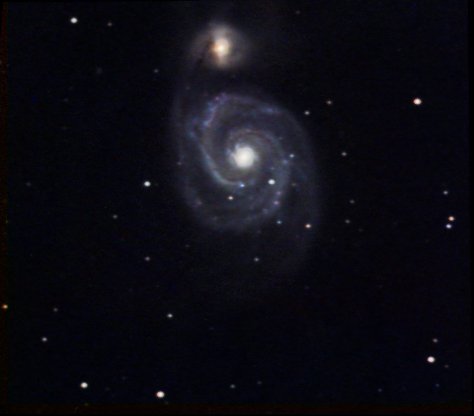
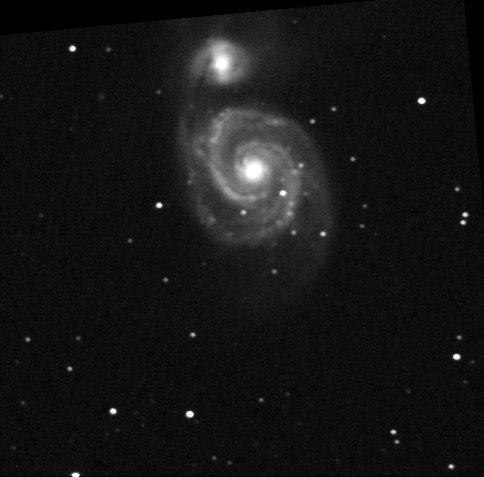
Combination of 11, 1 minute images using an SBIG ST9XE CCD camera.
10" f/6.3 schmidt-cassegrain telescope at prime focus.
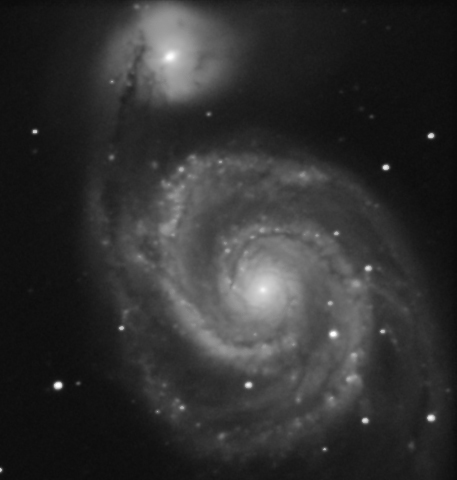
Combination of 10, 60 second images using an SBIG ST9E CCD camera.
16" f/10 schmidt-cassegrain telescope with f/6.3 focal reducer.
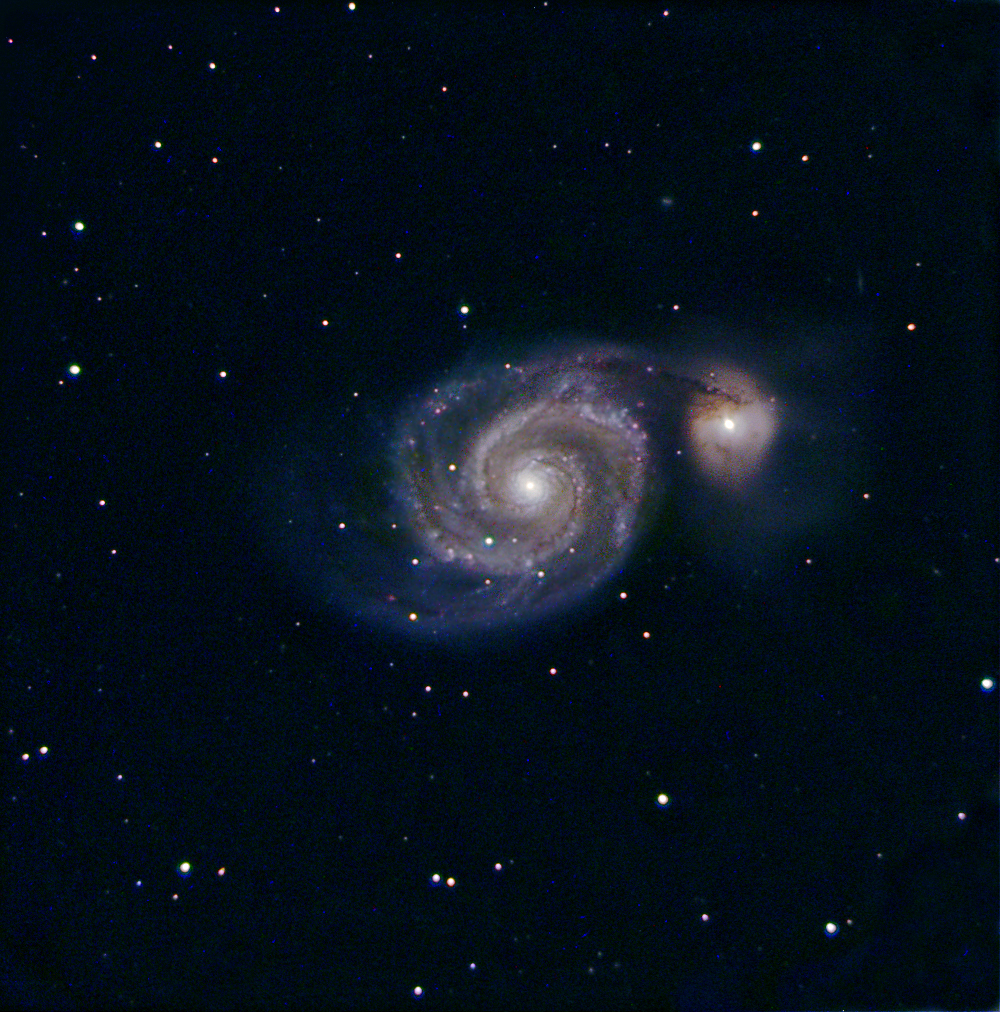
Combination of 30, 2 minute images unfiltered and 15, 2 minute images with red, green and blue filters.
SBIG STL 1001E CCD camera. 16" f/10 schmidt-cassegrain telescope with f/6.3 focal reducer.
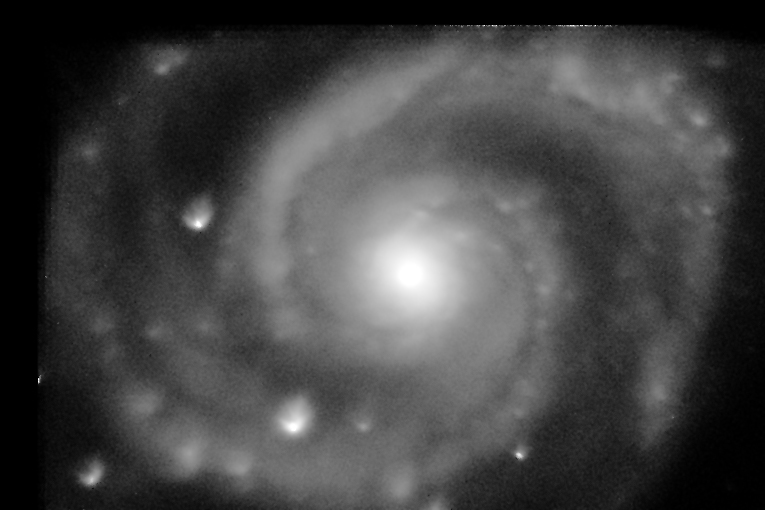
Combination of 10, 60 second images using an SBIG ST7XE CCD camera.
30" f/5 newtonian telescope at prime focus.
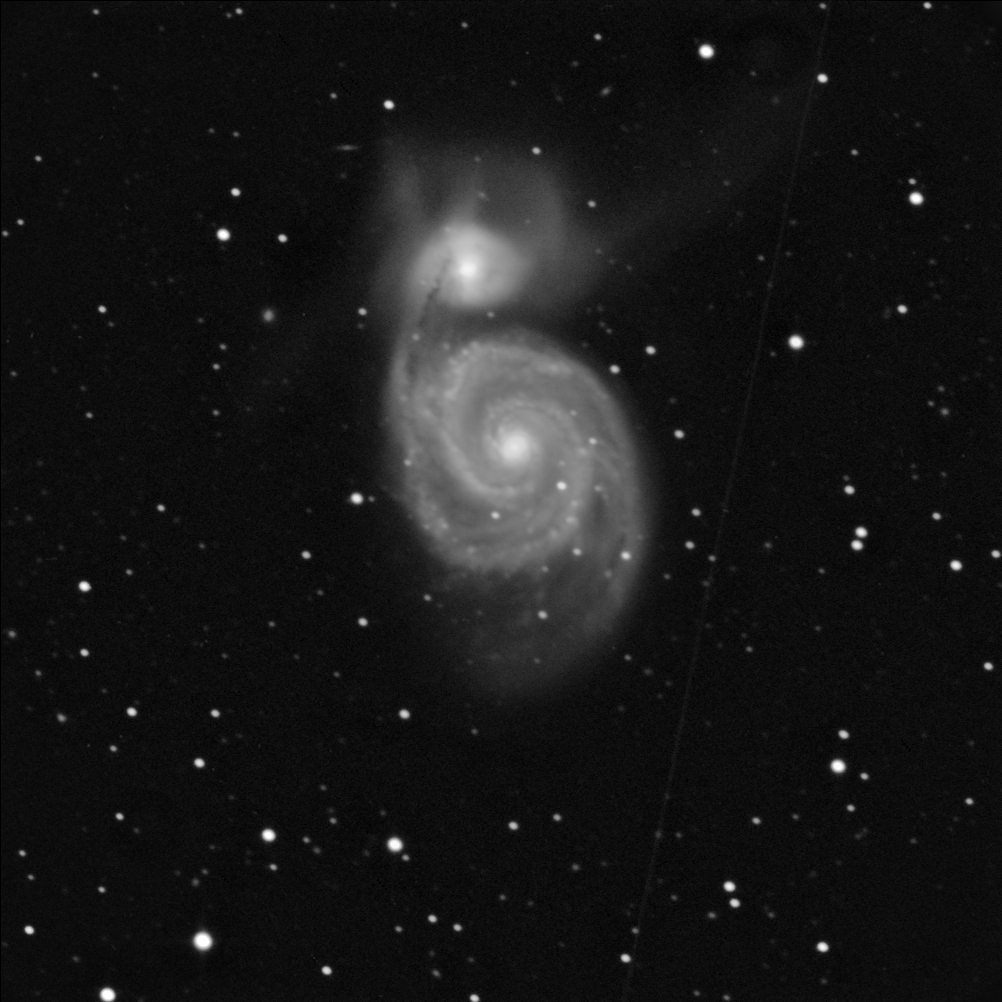
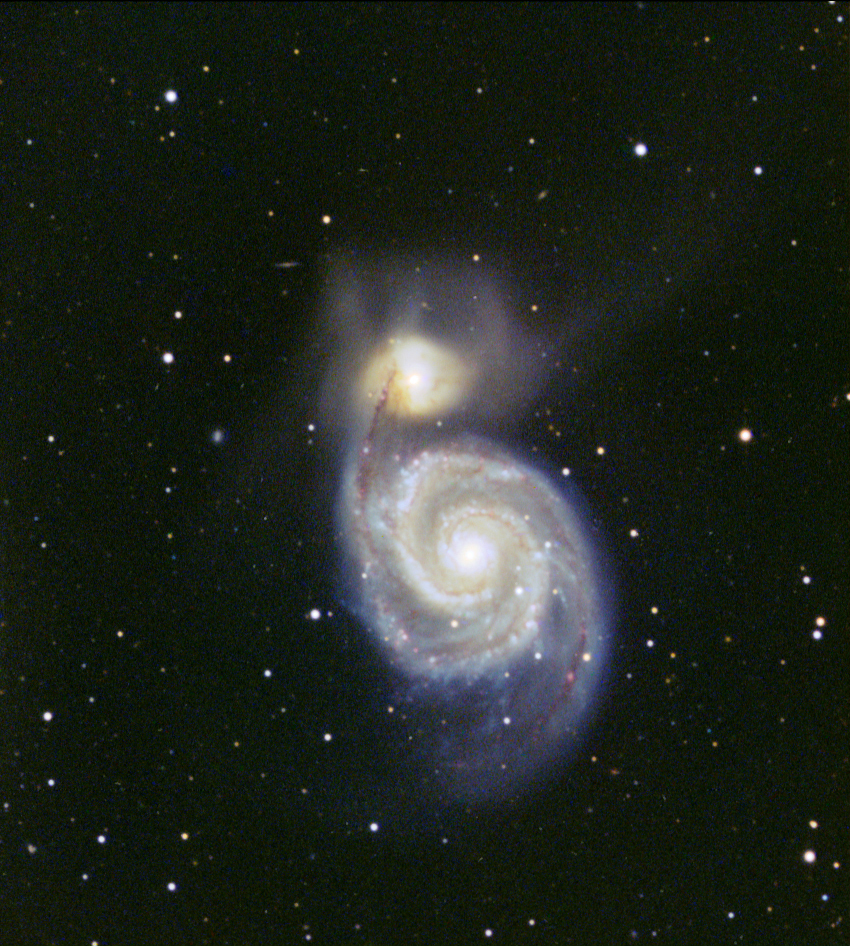
One thing I found very interesting in the above image were the 2 galaxies to the left and above M51. The one to the left (east) of NGC 5195 is the 15.7 magnitude IC 4277. The one to the left of M51 is the 15.4 magnitude IC 4278. These should be visible in telescopes in the 16" -20" range, but I have never read of any visual observations of these. In fact, I had not even realised they existed until I processed this image! They could be an interesting challenge for visual observers.
On 31 May, 2011, a bright Type II supernova erupted in M51, SN 2011dh. At its brightest it was easily visible in small telescopes, the second such supernova in 2011.
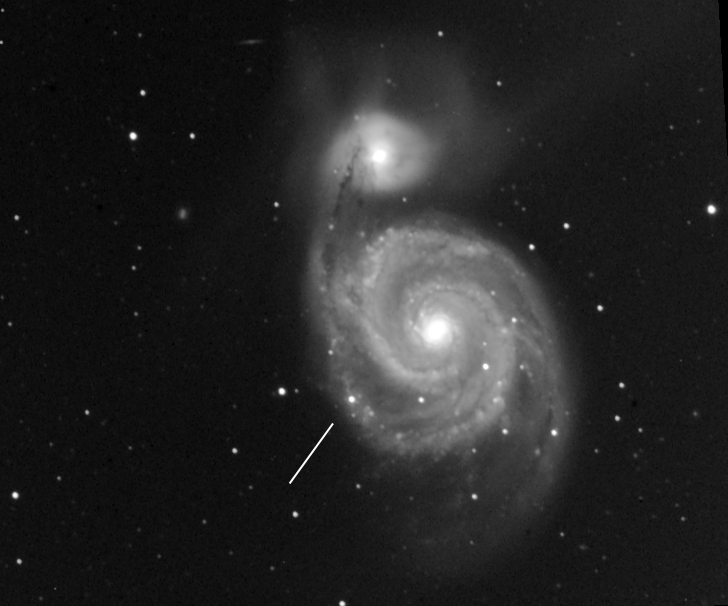
The supernova in M51 on June 6, 2011. The supernova is the bright star in the spiral arm, indicated by the line.
I followed the supernova for over a year as it faded. More images and the resulting lightcurve are here.